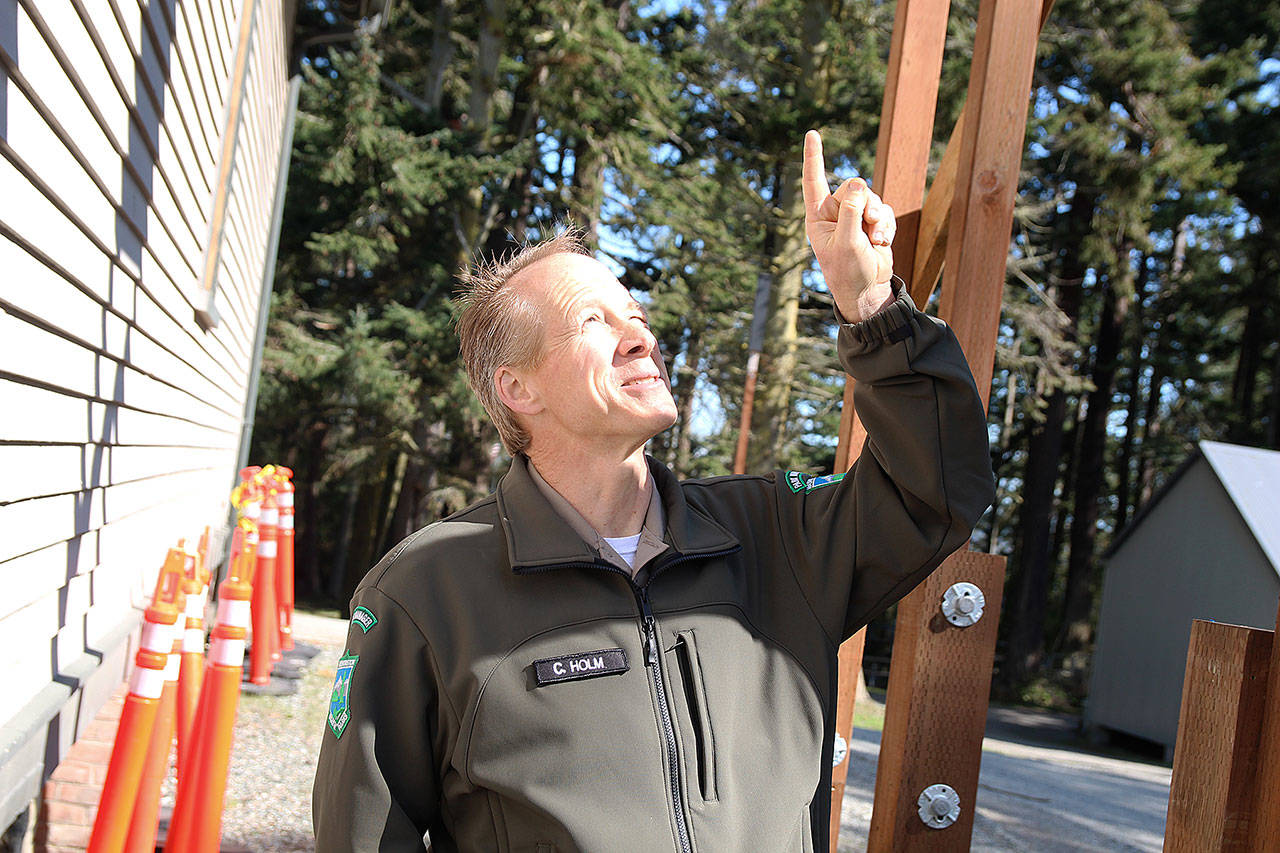Parks staff members at Fort Casey can appreciate bats’ importance to the ecosystem, but they couldn’t really appreciate the smell of guano from more than 300 bat mothers in their office’s attic.
When the maternity colony left for winter, so did the human occupants of the office building at Fort Casey State Park — temporarily — to allow the guano to be cleared, according to Chris Holm, Central Whidbey state parks area manager.
The attic cleanup is one of the first steps in planned roof and window replacement on the historic facility. The renovation project also includes the installation of a new home for the evicted bats.
“This is hopefully a win-win thing for both of us,” Holm said.
Parks staff worked with state Department of Fish and Wildlife and local bat biologists Sarah Schmidt and Ruth Milner to try and find a mutually beneficial solution.
The mom bats like to roost in tight, warm and dark places where the pups can huddle together for warmth, according to Schmidt.
She helped pick the design of two black slated boxes that sit about 12 feet off the ground on beams behind the office building with small slots for the bats.
The attic had housed little brown myotis and Yuma myotis species. The flying mammals serve an important roll as major predators for night-flying insects, including mosquitoes. A female with a pup will eat up to half her body weight worth of insects in order to produce enough milk, Schmidt said.
“They’re a really important part of the balance of keeping insects controlled,” she said.
Holm said staff wanted to promote the colony, but the roof and window replacement project will also include measures to prevent it from putting roots down in the attic again.
These measures will take on an almost festive look with more lighting, fans running and even Mylar balloons.
The sound of the shuffling Mylar is meant to disrupt the bat’s echolocation, he said.
It’s more than likely the colony will try and reclaim its former home, Schmidt said.
“Bats tend to be very loyal to their roost,” she said.
It remains to be seen if the new bat boxes will be deemed a suitable alternative by the returning mother bats. Schmidt said it’s probable they will start showing up at the park again around May and pups will begin to appear in June.
Holm and Schmidt both said they will continue to monitor the hand-made bat maternity wards to see how the animals like them. Schmidt said the design used had been successful at another park in Western Washington.
If it isn’t up to par, then they will adjust, Holm said.
“We’re going to be watching closely,” he said.
“I think everybody’s interested in seeing how this works.”



